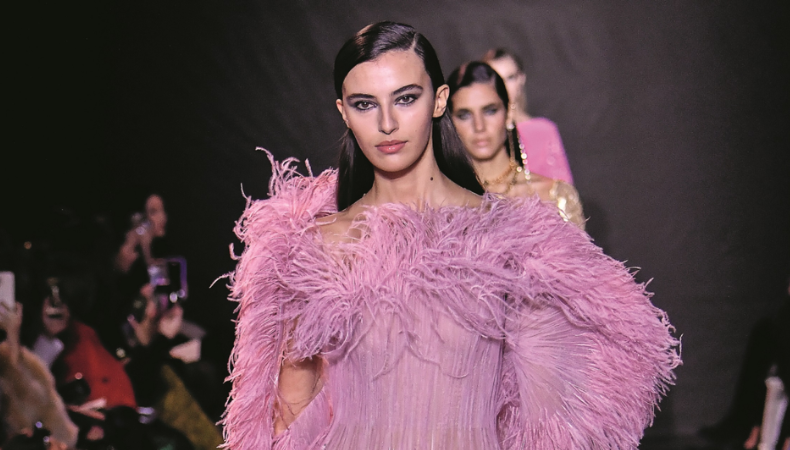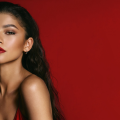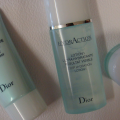A New Face of Beauty: The Rise of Middle Eastern Models

Years of criticism have been directed on the fashion industry for its lack of variety. A new crop of Middle Eastern models is changing world beauty standards now and undermining this narrative. Not only gorgeous but also strong; these incredible people honor their customs and inspire young men and women all around from their platforms.
Guiding the Charge
Models include Amira Al-Zuhair from Saudi Arabia, Malika El Maslouhi from Morocco, and Nora Attal—also Moroccan—have delighted viewers with their unique combination of Eastern grace and Western modernism. Their performances on high-fashion advertising and premium runways have disproved stereotypes and created avenues for additional Middle Eastern models to be well-known. Their achievement breaks beyond national and cultural boundaries to reveal how varied and sophisticated beauty is.
Celebrated for her amazing appearance and grace, Amira Al-Zuhair has graced the runs of top fashion companies, therefore providing a fresh perspective for the company. Malika El Maslouhi is a sought-after name in fashion thanks in great part to Nora Attal’s exotic beauty and strong presence, even if her flexible approach and ability to depict many aesthetics have made her a favorite among designers.
Apart from these trailblazers, Gigi and Bella Hadid—who bravely embrace their Palestinian roots despite growing up in the West—have been crucial in opening the road for a fresh crop of Arab models. Their global appeal and strong presence have pushed the beauty and ability of Middle Eastern models onto stage, motivating others to pursue their dreams. Often advocating for their lineage and the importance of representation, the Hadid sisters have honored their background on stage.
A change in society
The rise of Middle Eastern paradigms points to a broader overall cultural transformation. As the area undergoes quick modernization, a new generation of aspirational and confident people is developing. These models function as champions for their cultures rather than merely faces on magazine covers since they question stereotypes and support inclusiveness. Their success in the fashion business signifies the celebration of ethnic diversity and the demolition of challenges.
Their impact reaches the fashion industry as well as other spheres including cinema, music, and art. This cultural shift toward increased appreciation of diverse backgrounds and experiences points toward Rising Middle Eastern models are pushing a more inclusive globe and helping to alter society views.
Red rewriting the definition of beauty
Middle Eastern models influence beyond of the catwalk. Celebrating their origin and stressing their distinctive beauty allows them to rethink what it means to be beautiful in a global context. Their involvement in the fashion business is a significant protest against narrow definition of beauty, so encouraging a more inclusive and varied presentation of it. They encourage others to challenge established standards of beauty and embrace their individuality.
From fashion design to skincare and cosmetics, this redefinition of beauty shapes the beauty industry as well. Businesses are understanding more and more how crucial it is to please a broad spectrum of consumers and offer products that reflect their various attractiveness. Middle Eastern models, who support increased inclusiveness and representation in all sectors of the company, lead in this change.
Inspired upcoming generations
These models produce results beyond merely their own success. Young people from the Middle East and beyond come to them to embrace their identities and pursue their interests. Stories of determination and accomplishment offer hope and desire for those who wish to break through limits and make a difference on the earth.
Middle Eastern models offer their ways to educate the values of endurance, self-acceptance, and the need of representation. They encourage next generations to dream big and follow their goals since they illustrate that one’s background defines not success.
Difficulties and Triumphs
Middle Eastern approaches go beyond specific challenges even in their success. Often recognizing their background, they must balance cultural expectations with industry preconceptions. Although juggling these responsibilities requires will and courage, their achievements reflect their resiliency and commitment.
On the road to join the global fashion industry, one often faces various difficulties. Though they have to cope with misconceptions and misunderstandings, Middle Eastern models show their worth in a competitive field. Consequently, their achievements are not only personal but also significant standards for their civilizations and countries.
The Course of Fashion: Tomorrow
Middle Eastern models will undoubtedly be rather crucial in guiding the fashion industry as it grows. Their presence helps to define for following generations the importance of diversity and inclusion. Increasing acceptance of numerous beauty standards by the industry indicates a move towards a society more inclusive and representative.
Fashion designers and companies are looking for Middle Eastern models more and more as they have influence and appeal. These relationships are allowing a more dynamic and varied fashion environment honoring all sorts of beauty. The industry’s acceptance of this shift gets the ground ready for constant innovation and development.
Middle Eastern models bring about a huge and positive change in the fashion industry. These executives are not just transforming the company but also promoting diversity and defying prejudices so helping to bring about a more widespread cultural shift toward inclusivity and representation. As they keep advancing on the globe stage, they reflect the changing meaning of beauty and the need of valuing one’s heritage and uniqueness.
Their importance impacts society’s views of diversity and inclusiveness, therefore beyond mere fashion. The popularity of Middle Eastern models reminds us that beauty is not limited and that representation important. Clearly as the industry grows, these models will remain at the forefront, directing the effort toward a more inclusive and fair future.






